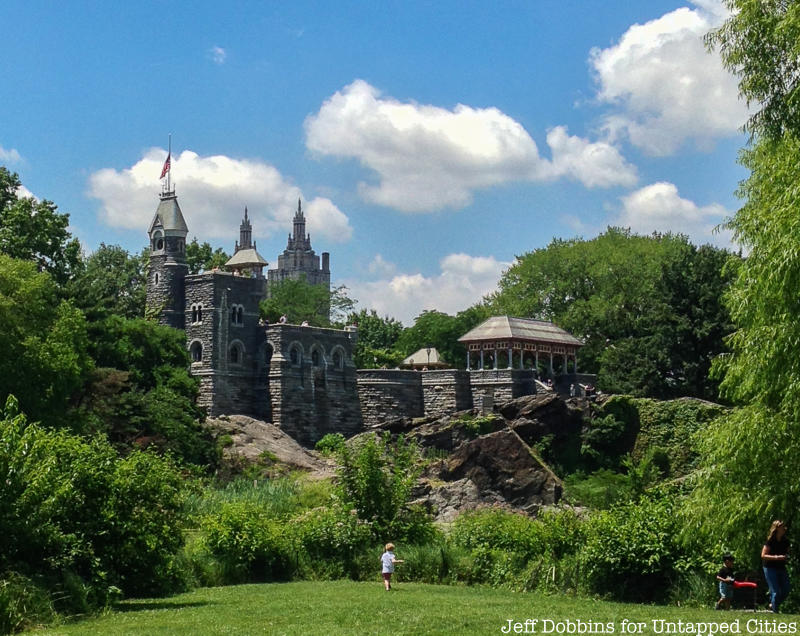
Much of Manhattan’s natural landscape was flattened as the city grew northwards and conformed to the street grid defined by the Commissioner’s Plan, but there are still some notable places to take in the Manhattan schist – natural bedrock formations both above and below ground.
1. Deep Below Grand Central Terminal

On the way down to the secret and mythical M42 basement in Grand Central Terminal, a large portion of the Manhattan schist is literally touchable alongside the staircase. The juxtaposition of the man made and the natural here, so many levels below ground, highlights the sheer feat of construction that Grand Central was, both above and below ground.

When workers get to the bottom of this staircase, the entrance to M42 will be before them. The M42 basement (also known as Substation 1T and 1L) played an important, clandestine role in World War II. The original converters, which are no longer in operation, powered much of the New York Central Railroad and were a target for German spies who wanted to sabotage rail movement on the East Coast. The M42 basement was so secret that you risked being shot on site if you went down there.





